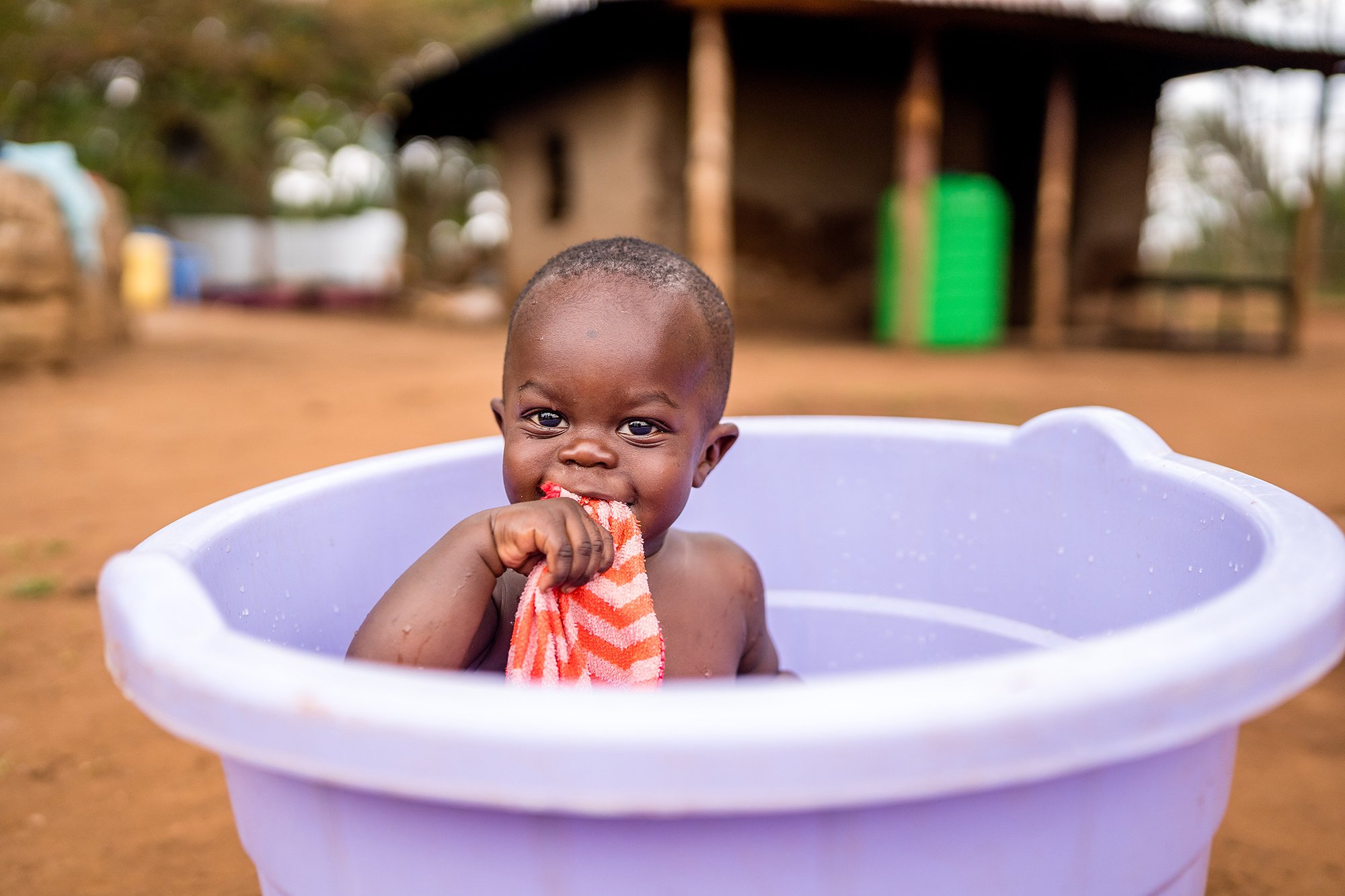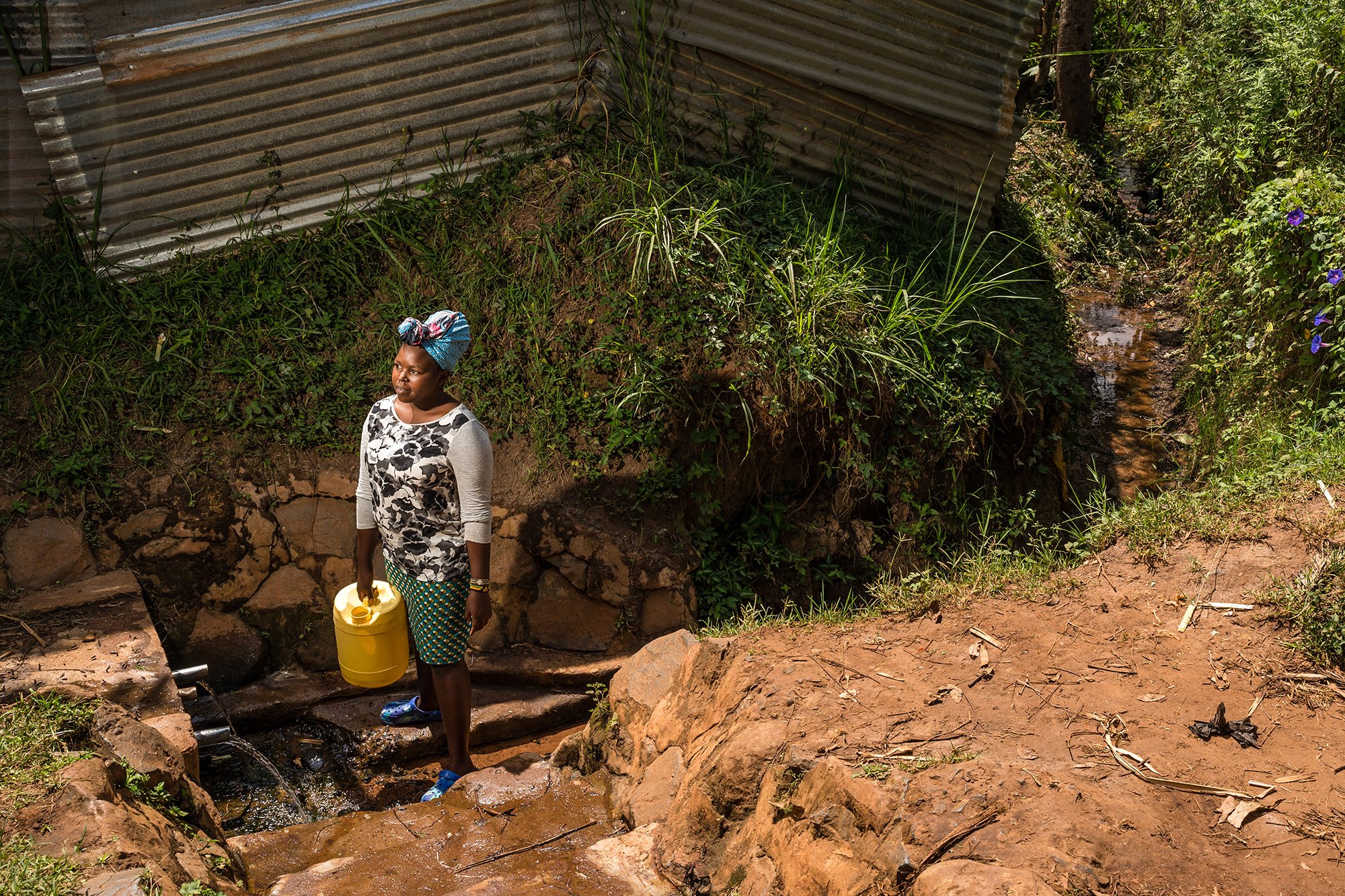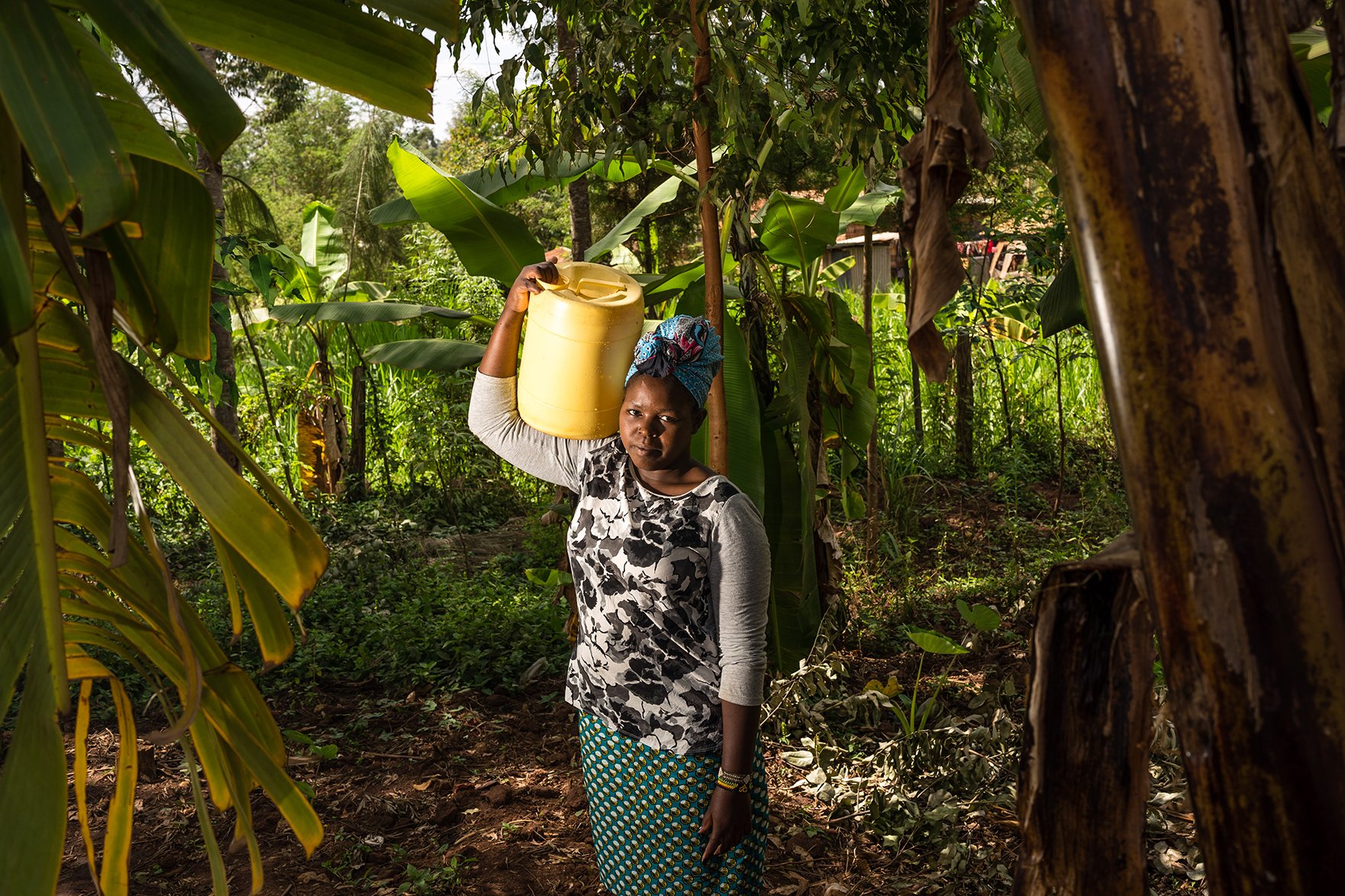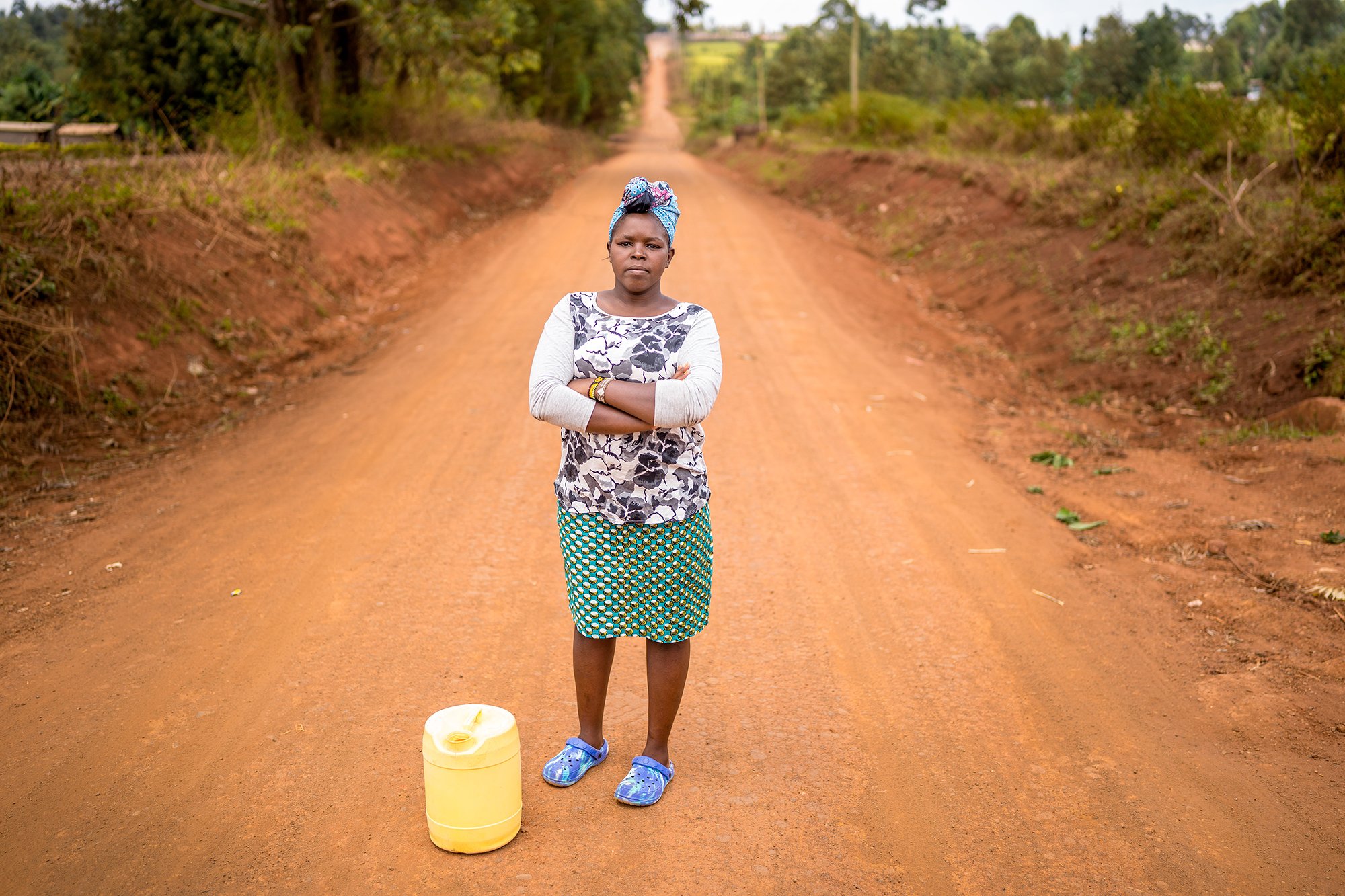"An Alternate Water Source"
Third year student Peris with her water bucket
When Gaëlle, Tessa, and I decided to walk with second and third year students, Sharon and Peris to Neema’s alternate water source, we thought it would be a short trip. So we set out, walking through the blue gate of the Neema property, then turned left and walked along the tree-and-fence-lined drive downhill to the main road.
Once we reached the main road, we turned right and walked side by side on the distinctive rich-red clay found all throughout Kitale — the clay that turns to dust in the dry season as it’s kicked up by the tires on cars, and to thick mud in the rainy season as the torrential downpours saturate it with water. Every now and then a motorcycle would honk its horn as it neared, not only making us aware of its presence, but also warning us to get to the side of the road “or else.”
Hand washing at Neema
A Neema student’s daughter gets a bath
The entire walk was a slight downgrade leading to the low part of the valley. Large trenches on the side of the road, carved into the clay from the heavy rains running downhill, were empty of water. But the week’s earlier rains left them slightly moist and a darker red than the road itself.
We talked while we walked, practicing our Swahili with Sharon and Peris and saying hello to others we passed by. Occasionally, passengers in cars, surprised at the site of three “wazungu” in rural Kenya, would yell out, “How are you?” And we kept walking as the temperature neared 85 degrees with the sun shining bright one moment causing a slight sheen of sweat to populate on our foreheads and the clouds overtaking it the next offering a bit of relief.
Nearly 25 minutes after leaving Neema, we made a right onto a little side road, which is when Gaëlle and I realized we’d been walking for over a mile. After walking a little further and going around a small densely populated patch of trees and brush, we finally arrived at Neema’s alternate water source. Two pipes, each one to two inches in diameter, stuck a foot and a half out of the ground, and freshwater flowed out of them into the little ravine that ran down away from the water source.




I’ve been using the phrase “alternate water source” because that’s what it is. The Neema property has its own water source that students and staff use for normal things — boiling water for cooking, filling containers for hand washing, bathing themselves and their children, cleaning dishes, doing laundry, drinking, etc. But the water is connected to the county’s water lines and the county’s water isn’t always reliable. Because occasionally, when certain parts of the city are under construction, the water gets shut off unexpectedly. And when that happens, Neema’s single tap stops working, and the students and staff are forced to use this alternate water source for all the things listed above.
Children washing their hands with soap and water at Neema
Vegetables being washed for meal time
Which is why Gaëlle, Tessa, and I took this walk with Sharon and Peris. Tessa (Neema’s resident photographer) wanted to get some pictures of the process Neema students go through just to get water. Peris brought along a yellow, ten liter bucket (jerry can) that used to carry the water, and after seeing the water source and getting the pictures we wanted, we started the one and a quarter mile trek back to Neema. Since the entire walk there was a slight downgrade, the walk back was a slight upgrade. And on the way back, the sun decided to be selfish and grace us with its continued presence rather than giving the clouds a chance to take center stage.
As we walked, Sharon and Peris shared what the Neema students go through just to get water when the county water unexpectedly shuts off. The students go in shifts, two times a day — once before morning devotions begin and once after the school day is over. Each student takes one of the yellow, ten liter jerry cans and walks the one and quarter miles downhill to the alternate water source. After filling the bottles to the top with water, they then carry them, which now weigh 22 pounds filled with water, back uphill another one and quarter miles back to Neema.
And again, there’s no planning for when this will happen. The county water just stops and the water trek to the alternate water source takes over. Sometimes the county water can be off for three or four days.
One of the first projects at Neema’s new property is going to be the digging of a bore hole (well). Not only will this make construction cheaper — cement can be mixed on site — it’ll also be a guaranteed and reliable water source for Neema students and staff. Having its own well means Neema students and staff will no longer be at the mercy of the county’s water source, and therefore, will no longer be forced to trek two and half miles round trip twice a day just to obtain the one thing that is essential for all of life. The time and energy saved will free up the students (many of whom are under 20) to just be girls, living life with friends, developing relationships, taking care of their children, and giving their extra energy be able to go towards the things that really matter — skills training, counseling, and discipleship as they work towards independence and healing.
Written by Greg Lusby, Grace Collective Administrator and Communication Support
Third year student Peris with her water bucket
A Neema student’s child gets a bath







